Vegetables are one of the cornerstones of a nutritious diet. Packed with vitamins, minerals, fiber, and an array of antioxidants, they help promote overall health, strengthen the immune system, and reduce the risk of chronic diseases. With such a wide variety of vegetables available, choosing the “best” can often feel overwhelming. To help guide you, below are 12 of the healthiest vegetables—rich in nutrients, flavor, and versatility— that deserve a spot on your plate. Whether you’re a seasoned chef or a kitchen novice, incorporating these vegetables into your weekly meals can make a profound difference in your well-being.
1. Spinach
Why It’s Healthy:
Spinach is a leafy green powerhouse brimming with vitamins A, C, and K, as well as iron, calcium, and magnesium. This leafy green is also a good source of antioxidants called carotenoids, which have been linked to a reduced risk of certain chronic illnesses.

Health Benefits:
- Bone Health: High levels of vitamin K help maintain strong bones.
- Eye Health: Spinach’s carotenoids, like lutein and zeaxanthin, may help protect your eyes from age-related macular degeneration.
- Heart Health: The potassium in spinach helps regulate blood pressure levels.
How to Eat:
Add fresh spinach to smoothies, toss it into salads, sauté it with garlic for a quick side dish, or layer it into a veggie lasagna for extra nutrition.
2. Kale
Why It’s Healthy:
Often touted as a “superfood,” kale contains robust amounts of vitamins K, A, and C, along with manganese, copper, and dietary fiber. It’s also a fantastic source of antioxidants—like quercetin—that combat inflammation and oxidative stress.
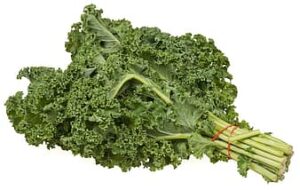
Health Benefits:
- Detox Support: Its high content of sulfur compounds supports the body’s detoxification processes.
- Cancer-Fighting Properties: Kale’s phytonutrients have been studied for their potential anti-cancer effects.
- Immune Support: Vitamin C is crucial in supporting healthy immune function.
How to Eat:
Bake kale chips in the oven with olive oil and seasonings for a crunchy snack, blend it into green smoothies, or use it as a base for a hearty salad with roasted vegetables.
3. Broccoli
Why It’s Healthy:
Broccoli is a cruciferous vegetable rich in vitamins C and K, folate, potassium, and fiber. It also contains sulforaphane, a compound linked to anti-inflammatory and potential anti-cancer effects.
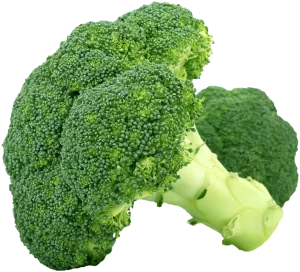
Health Benefits:
- Healthy Digestion: High in dietary fiber, broccoli helps maintain digestive regularity.
- Bone Strength: Vitamin K and calcium contribute to strong bones.
- Heart Protection: Its antioxidants may help lower cholesterol and manage blood pressure.
How to Eat:
Steam broccoli lightly for a side dish, roast it with olive oil and garlic, or toss it into stir-fries, pastas, and soups.
4. Brussels Sprouts
Why It’s Healthy:
Closely related to broccoli, Brussels sprouts are also a cruciferous vegetable packed with vitamins C and K, folate, manganese, and antioxidants. Their high fiber content supports good digestion.

Health Benefits:
- Anti-Inflammatory: Rich in antioxidants that help reduce inflammation markers.
- Blood Sugar Control: Fiber and antioxidant properties may help stabilize blood sugar levels.
- Digestive Health: Help feed healthy gut bacteria and keep your digestion on track.
How to Eat:
Roast Brussels sprouts in the oven with balsamic vinegar, sauté them with bacon for a flavorful side, or shred and use in salads or slaws.
5. Carrots
Why It’s Healthy:
Beloved for their sweetness and satisfying crunch, carrots are a standout for their beta-carotene content. The body converts beta-carotene into vitamin A, which is essential for healthy eyes, skin, and immune function.
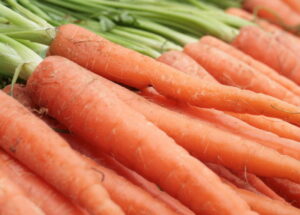
Health Benefits:
- Eye Health: Vitamin A helps maintain good vision and may reduce the risk of night blindness.
- Skin Health: Beta-carotene assists in skin cell renewal and may combat signs of aging caused by environmental damage.
- Weight Management: Their natural sweetness and fiber content help you feel full without adding too many calories.
How to Eat:
Snack on raw carrot sticks with hummus, roast them with herbs, or blend them into soups for a naturally sweet and creamy flavor.
6. Bell Peppers
Why It’s Healthy:
Bell peppers come in a rainbow of colors—red, green, yellow, orange—and each variety is loaded with vitamins A, C, and B6. Red bell peppers, in particular, are the highest in vitamin C and also contain the antioxidant lycopene.

Health Benefits:
- Immune Support: High vitamin C content helps strengthen the immune system.
- Eye Protection: The carotenoids lutein and zeaxanthin can support eye health.
- Heart Health: Antioxidants in bell peppers may help reduce oxidative stress, supporting cardiovascular function.
How to Eat:
Use them in salads, stir-fries, or stuffed with grains and beans. Bell peppers are also delicious raw with dips or chopped into salsa.
7. Sweet Potatoes
Why It’s Healthy:
Sweet potatoes owe their bright orange color to their high beta-carotene content. They’re also packed with vitamins C and B6, potassium, and manganese, making them a wonderful addition to any meal.

Health Benefits:
- Stable Energy Source: Complex carbohydrates and fiber help provide sustained energy.
- Blood Sugar Control: Despite their sweet taste, they have a lower glycemic index than regular potatoes.
- Antioxidant Powerhouse: Beta-carotene helps protect cells from oxidative damage.
How to Eat:
Enjoy them baked, mashed, or cut into wedges and roasted. They also make a creamy addition to soups and stews.
8. Garlic
Why It’s Healthy:
Garlic has been prized for centuries for its medicinal properties, thanks largely to a compound called allicin, which has antibacterial and anti-inflammatory properties. It’s also a source of manganese, vitamin C, and vitamin B6.
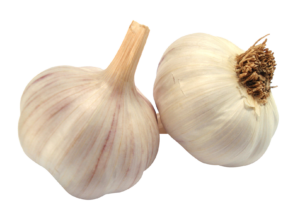
Health Benefits:
- Heart Health: May help lower cholesterol and regulate blood pressure.
- Immune Booster: Allicin may help ward off colds and infections.
- Anti-Inflammatory: Helps combat inflammation that contributes to chronic diseases.
How to Eat:
Use fresh garlic in sauces, soups, stir-fries, and marinades. Try roasting whole garlic cloves until they become soft and sweet, then spread them on bread or mix into dips.
9. Onion
Why It’s Healthy:
A staple in cuisines worldwide, onions are rich in vitamins C and B6, manganese, and antioxidants like quercetin. They have a bold flavor that intensifies when cooked and add nutritional value to many dishes.

Health Benefits:
- Cancer-Fighting Compounds: Onions contain sulfur compounds linked to reduced cancer risk.
- Anti-Inflammatory: Quercetin supports a healthy inflammatory response.
- Heart Health: May help reduce cholesterol levels and support healthy blood pressure.
How to Eat:
Use raw onions in salads and salsas, or caramelize them for a naturally sweet topping on burgers or pizzas. They also form the flavor base for countless soups, stews, and sauces.
10. Cauliflower
Why It’s Healthy:
Another member of the cruciferous family, cauliflower is high in fiber, vitamins C and K, and several antioxidants. Its mild flavor and versatile texture make it a popular low-carb substitute for grains like rice or even pizza crust.
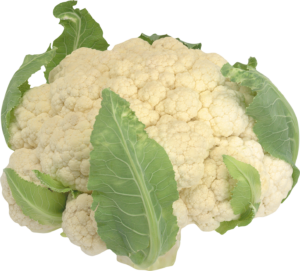
Health Benefits:
- Weight Management: Low in calories yet high in fiber, cauliflower helps you feel satisfied.
- Nutrient-Dense: Provides a good amount of vitamins and minerals per serving.
- Potential Cancer Protection: Like other cruciferous vegetables, cauliflower’s compounds may offer some anti-cancer benefits.
How to Eat:
Roast cauliflower florets with spices, mash it as a low-carb potato substitute, or blitz raw cauliflower in a food processor to make “cauliflower rice.”
11. Tomatoes
Why It’s Healthy:
Technically a fruit, tomatoes are often used like vegetables in cooking. They’re full of vitamins C and K, potassium, and the antioxidant lycopene, which is linked to heart health and potentially lower risk of certain cancers.
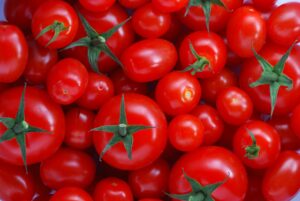
www.flickr.com/photos/the_ewan/
Health Benefits:
- Heart Health: Lycopene may help lower “bad” LDL cholesterol levels.
- Skin Protection: Some studies suggest lycopene may help protect the skin against UV damage.
- Bone Support: Vitamin K and calcium are important for bone strength.
How to Eat:
Slice tomatoes for fresh salads, cook them down into sauces for pasta, or use them as a base for soups and stews. Roasting tomatoes can intensify their natural sweetness.
12. Cabbage
Why It’s Healthy:
Cabbage is a leafy vegetable that comes in green, red, and savoy varieties. It’s rich in vitamins C and K, fiber, and various antioxidants. It also contains beneficial compounds known as glucosinolates.

Health Benefits:
- Digestive Aid: Fiber helps to maintain a healthy gut and regular bowel movements.
- Anti-Inflammatory Properties: The antioxidants in cabbage can help reduce inflammation markers.
- Weight-Friendly: Low in calories yet high in water content, it helps with satiety and hydration.
How to Eat:
Use cabbage in coleslaws, salads, or soups. Fermented cabbage (sauerkraut or kimchi) supports gut health and adds tangy flavor to sandwiches and rice bowls.
Tips for Incorporating More Vegetables
- Prep in Advance: Wash and chop vegetables on the weekend so they’re ready to toss into quick meals during busy weekdays.
- Experiment with Cooking Methods: Roasting, steaming, sautéing, grilling, or stir-frying can reveal different flavors and textures.
- Eat the Rainbow: Aim to include as many colors as possible to maximize nutrient diversity.
- Sneak Them In: Add finely chopped veggies to sauces, smoothies, or even pancake batter if you have picky eaters at home.
- Season Creatively: Experiment with fresh herbs, spices, and healthy fats like olive oil to enhance flavor.
Final Thoughts
Eating a variety of nutrient-dense vegetables is essential for optimal health. The 12 vegetables highlighted above—spinach, kale, broccoli, Brussels sprouts, carrots, bell peppers, sweet potatoes, garlic, onions, cauliflower, tomatoes, and cabbage—offer a stellar mix of vitamins, minerals, and antioxidants. They can help bolster immunity, support healthy digestion, maintain good vision, and reduce the risk of chronic diseases such as heart disease and cancer.
Moreover, their flavors range from sweet and mild (like carrots and onions) to bold and sharp (like garlic and kale), ensuring there’s something to please every palate. By rotating these vegetables into your diet—and experimenting with a variety of recipes and cooking styles—you can keep meals fresh, exciting, and full of essential nutrients. Give these vegetables a prime spot on your plate, and your body will thank you in more ways than one.
